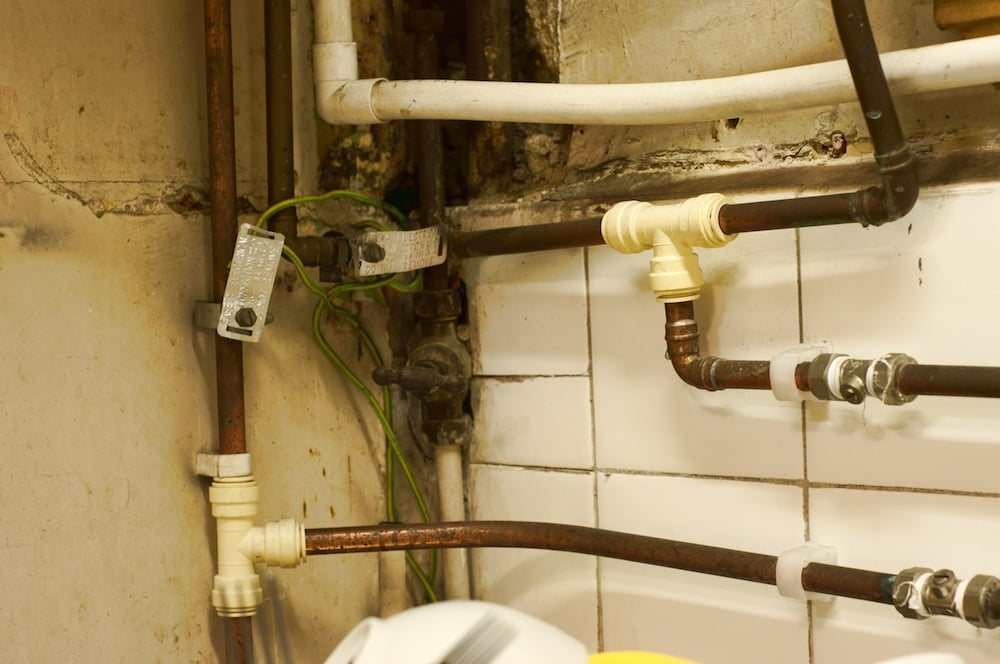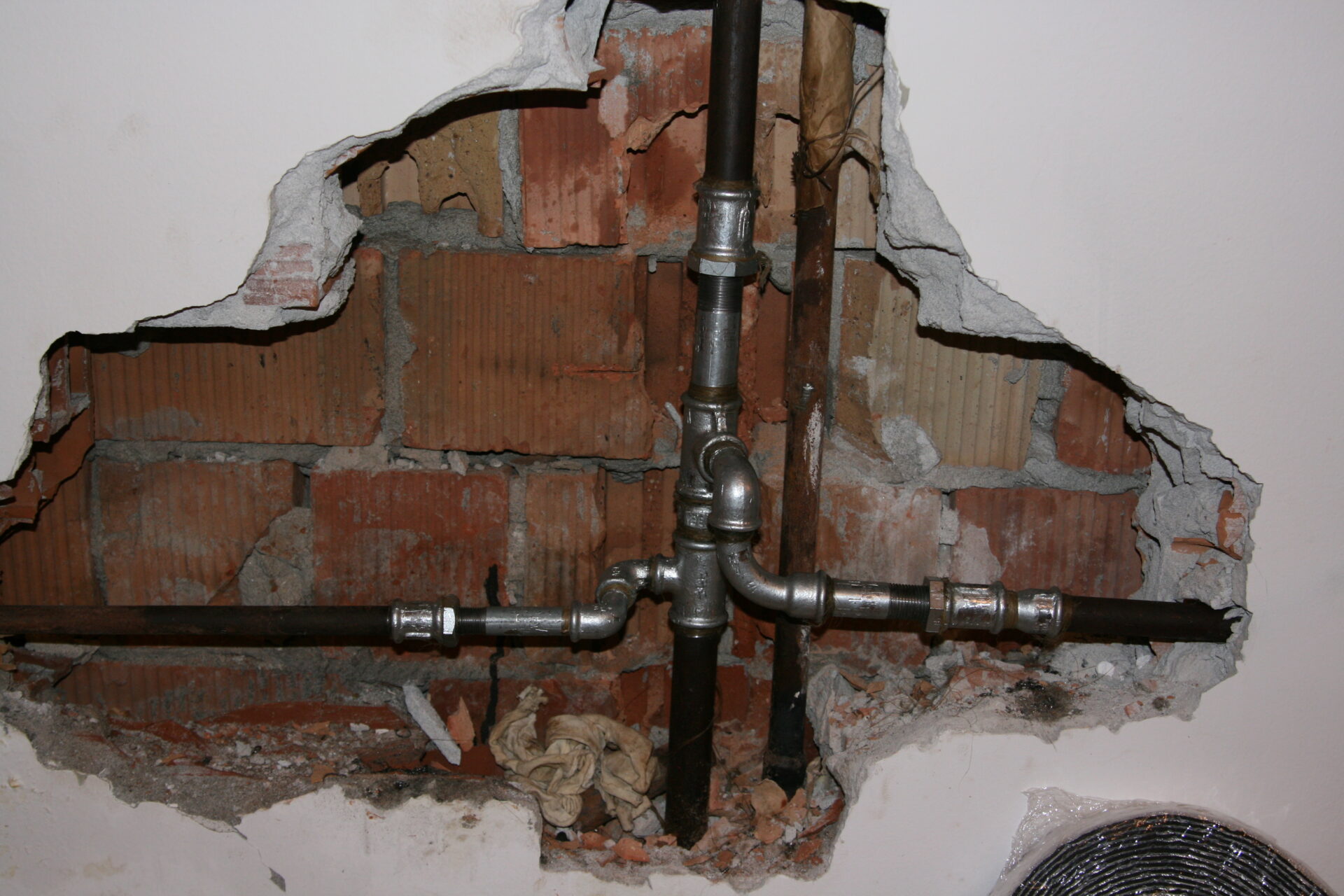Strategies for Handling Plumbing in Older Homes: Essentials
Strategies for Handling Plumbing in Older Homes: Essentials
Blog Article
What are your thoughts about Common Plumbing Problems in Older Homes?

Older homes frequently come with charm, personality, and background, however they can additionally bring a host of pipes problems. Whether you're taking care of aging pipelines, low tide pressure, or leaks, understanding exactly how to attend to these typical problems is crucial to maintaining a risk-free and practical home. In this guide, we'll discover the normal plumbing difficulties encountered by older homes and provide practical solutions to keep your pipes in leading shape.
Understanding Common Plumbing Issues
Aging Pipes
Among one of the most typical concerns in older homes is maturing pipes. Depending on the age in which your home was built, the pipes may be made from products that have worn away gradually, such as galvanized steel, cast iron, or perhaps lead. These materials can rust, become breakable, or establish leakages, leading to water damages and potential carcinogen.
Water Top Quality Testing
Older pipelines can impact the top quality of your water. Conduct a water high quality examination to look for contaminants such as lead, corrosion, or various other contaminations that may be presented by aging pipes.
Solutions for Common Pipes Concerns
Changing Aging Pipelines
If your home has old, degrading pipelines, think about replacing them with modern materials like copper or PEX. This can be a substantial investment, however it will stop future issues and enhance the security and reliability of your plumbing system.
Taking Care Of Low Tide Stress
To deal with low tide pressure, begin by cleaning or replacing old components and removing mineral buildup in the pipes. If the issue continues, it might be essential to change areas of rusty pipelines.
Fixing and Replacing Leaking Pipes
For little leakages, you can make use of pipeline clamps or epoxy putty as a temporary fix. However, it's best to replace dripping pipes completely to prevent further damages.
Upgrading Components
Updating old components to modern-day, water-efficient versions can boost your home's pipes performance and decrease water intake. Try to find components with the WaterSense label for the best efficiency.
Handling Pipe Rust
If your pipes are corroded, replacing them with corrosion-resistant products like copper, PVC, or PEX is the most effective remedy. Normal assessments and water top quality upkeep can assist avoid even more corrosion.
Low Tide Stress
If you're experiencing low tide pressure, it could be due to natural resources, rust inside the pipes, or old fixtures that are no more working successfully. This can be a major hassle, especially in locations like showers and sinks.
Leaking Pipes
Leaks are another constant problem in older homes, typically caused by rusty or worn-out pipelines. Also little leaks can cause significant water damages, mold development, and increased water expenses if not resolved quickly.
Obsolete Fixtures
Obsolete plumbing components such as faucets, toilets, and showerheads not just look old but might also be much less efficient, susceptible to leakages, or inappropriate with modern-day plumbing requirements.
Pipe Corrosion
Corrosion is an usual issue in older pipelines, especially those made from galvanized steel or actors iron. Corroded pipelines can restrict water circulation, cause staining, and ultimately bring about leaks or pipe bursts.
Examining the Condition of Your Plumbing
Evaluating Visible Pipes
Beginning by examining any type of noticeable pipes in your house, such as those in basements, crawl spaces, or under sinks. Seek indicators of deterioration, leaks, or rust, which can suggest underlying issues.
Looking for Leaks
Look for leakages by examining areas around taps, toilets, and under sinks. You can additionally monitor your water meter prior to and after a period of no water make use of to find surprise leaks.
When to Call an Expert
While some pipes issues can be managed with do it yourself remedies, there are times when it's ideal to hire a specialist. If you're handling significant leakages, comprehensive rust, or are unclear regarding the problem of your pipelines, a certified plumbing professional can provide skilled analysis and repair service.
Preventive Upkeep Tips
Normal Inspections
On a regular basis inspect your plumbing system for indications of damage. Capturing concerns early can prevent costly repair work down the line.
Water Pressure Guideline
Guarantee your water stress is within the recommended range to avoid emphasizing your pipelines and fixtures. A plumbing can set up a pressure regulator if needed.
Water Quality Maintenance
Install water filters or softeners if your water quality is poor. This can protect your pipes and components from damage caused by difficult water or contaminants.
Aggressive Pipe Replacement
If your home has older pipes, consider proactive replacement before major problems develop. This can save you from emergency repair work and water damages.
Verdict
Managing plumbing issues in older homes calls for a combination of alertness, preventative upkeep, and prompt upgrades. By comprehending the usual challenges and understanding when to seek professional aid, you can guarantee your plumbing system remains useful and trusted for several years ahead.
Common Plumbing Issues in Older Homes and How to Fix Them
Owning an older home in Australia comes with its unique charm and a set of challenges, especially when it comes to plumbing. The Sunshine Coast has many older properties that can harbour plumbing problems that aren t just inconvenient but potentially costly. Here s a look at some common plumbing issues in older homes and expert advice on how to handle them.
Outdated Piping Materials
Many older homes were built with galvanised steel, cast iron, or even lead pipes, materials that are far from ideal by today s standards. Galvanised pipes are prone to corrosion and clogging, while lead pipes pose serious health risks.
How to Fix:
Replacing old pipes is a job for a professional. Upgrading to copper or PVC piping not only enhances water quality and flow but also increases the property s safety and value. If you suspect your home has outdated materials, a licensed plumber can conduct a thorough inspection and recommend the best course of action.
Corrosion and Pipe Degradation
Over time, exposure to water and minerals can cause pipes to corrode, leading to leaks, bursts, and water contamination. Corrosion is especially common in homes over 50 years old.
How to Fix:
Regular inspections can catch early signs of corrosion. If corrosion is found, the affected section of piping often needs to be replaced. For homes with extensive corrosion, a complete plumbing overhaul might be necessary. It s crucial to consult with a plumbing expert to understand the extent of the issue.
Tree Root Intrusion
Older neighbourhoods usually have mature trees whose roots can intrude into pipe lines, causing blockages or damage. This is particularly problematic for sewer lines, where roots seek out water sources.
How to Fix:
A plumber can use a specialised camera to inspect sewer lines for root intrusion. If roots are a problem, methods like root cutting or hydro-jetting can clear the obstruction. In severe cases, part of the pipe may need replacing. Consider root barriers around the piping to prevent future issues.
Inadequate Water Pressure
Low water pressure in older homes can be due to various factors, including corroded water lines, sediment build-up in pipes, or outdated fixtures.
How to Fix:
First, check if the low pressure is isolated to one area or throughout the house. Replacing old fixtures can sometimes resolve the issue. However, if the problem is more widespread, it might be due to sediment or corrosion. Flushing the system or replacing the affected pipes usually restores normal pressure. Again, a professional assessment is advisable.
Outdated Fixtures
Older homes often feature fixtures that are not only visually dated but functionally inefficient. This includes everything from toilets and taps to showerheads and washing machine hoses.
How to Fix:
Updating these fixtures can improve both water efficiency and the aesthetic appeal of your home. Modern fixtures are designed to conserve water, which can significantly reduce your water bill and lessen your environmental impact.
Conclusion
Maintaining the plumbing in an older home requires a proactive approach. Regular checks and updates are key to preserving these beautiful properties. If you re facing plumbing issues in your older home, it s best to call on experienced professionals like Green & Gold Plumbing & Gas. With the right expertise, even the most daunting plumbing problems can be resolved, ensuring that your home s character is maintained while its functionality is enhanced.
https://gandgplumbing.com.au/common-plumbing-issues-in-older-homes-and-how-to-fix-them/

We hope you enjoyed our topic about Common Plumbing Challenges In Old Buildings. Many thanks for spending some time to read our blog. Feel free to take the time to distribute this blog if you liked it. We take joy in your readership.
This Site Report this page